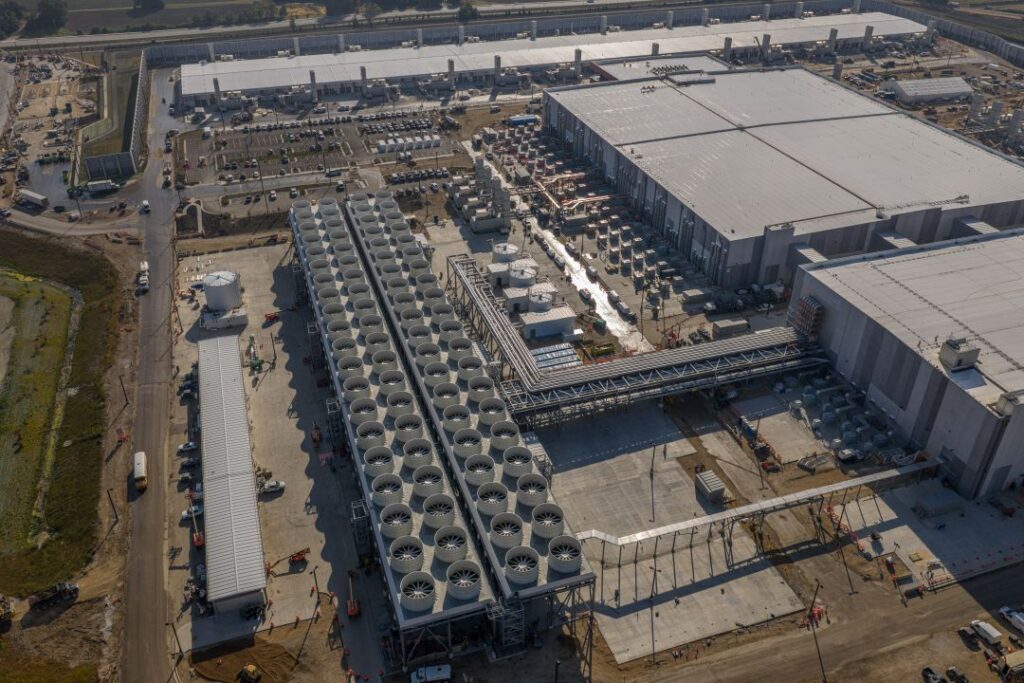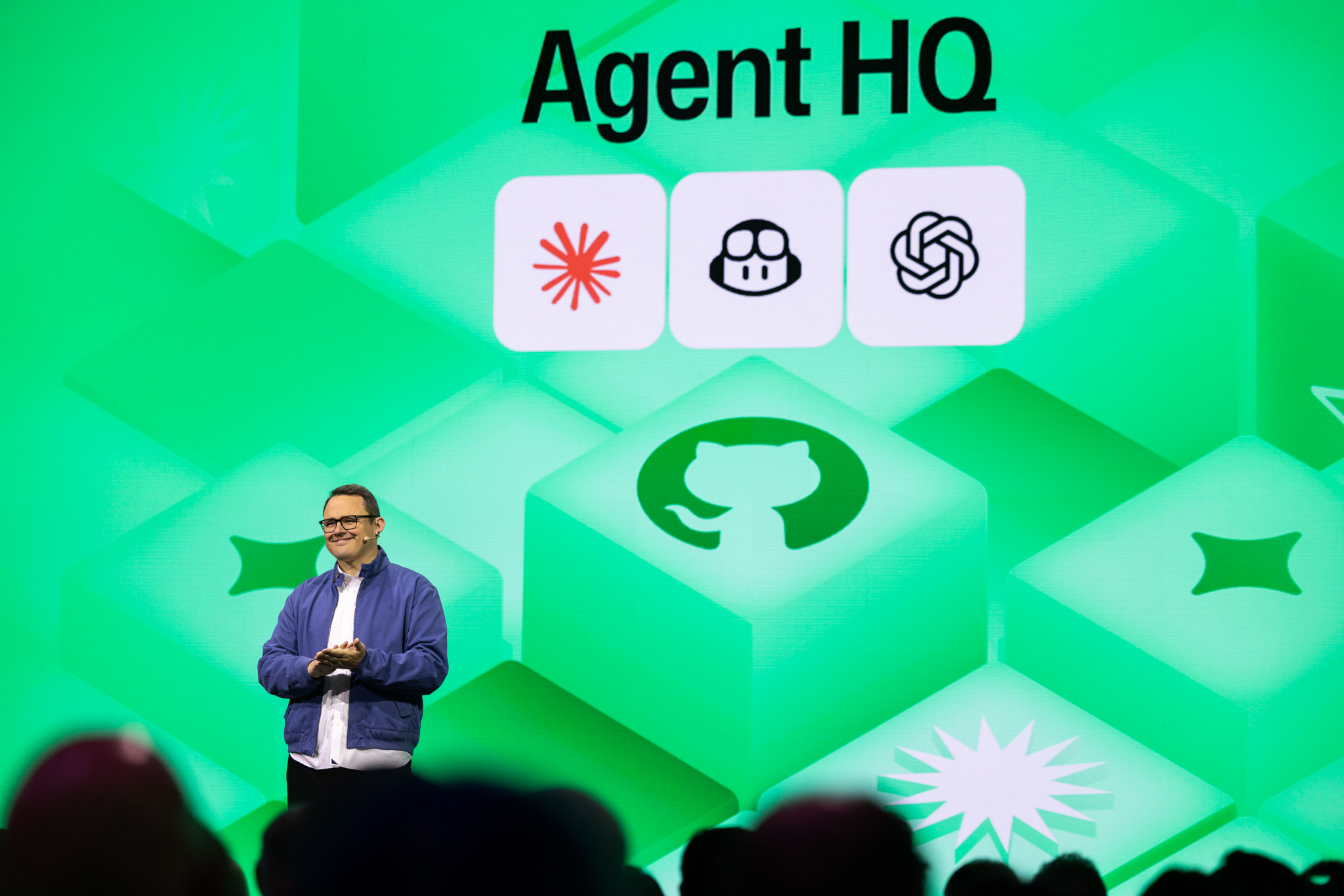Announcing Azure Copilot agents and AI infrastructure innovations
In this article
Agentic cloud operations: Introducing Azure CopilotAzure’s AI infrastructure: The backbone of modernizationBuilding for trust: Resiliency, operational excellence, and securityWhat does modernizing workloads look like today?Looking ahead
The cloud is more than just a platform—it’s the engine of transformation for every organization. This year at Microsoft Ignite 2025, we’re showing how Microsoft Azure modernizes cloud infrastructure at global scale—built for reliability, security, and performance in the AI era.
Streamline cloud operations with Azure Copilot
From scalable compute to resilient networks and AI-powered operations, Azure provides the foundation that helps customers innovate faster and operate with confidence. Our strategy is anchored in three key areas, each designed to help customers thrive in a rapidly changing landscape:
We’re strengthening Azure’s global foundation. We’re expanding capacity and resilience across regions while optimizing datacenter design, power efficiency, and network topology for AI-scale workloads. Our services are zone-redundant by default, our edge footprint is growing to meet low-latency needs, and security and compliance controls are embedded at every layer. From confidential computing and sovereign cloud architectures to our security capabilities, Azure is engineered for trust by design.
We’re modernizing every workload. We’re advancing compute, network, storage, application, and data services with Microsoft Azure Cobalt and Azure Boost systems, Azure Kubernetes Service (AKS) Automatic, and Azure HorizonDB for PostgreSQL. We embrace and integrate with Linux, Kubernetes, and open-source ecosystems customers rely on.
We’re transforming how teams work. We’re embedding AI agents directly into the platform through Azure Copilot and GitHub Copilot, bringing agent-based capabilities for migration, app modernization, troubleshooting, and optimization. These features remove repetitive tasks so teams can focus on architecture instead of administration, making an integral part of how Azure runs end-to-end.
Agentic cloud operations: Introducing Azure Copilot
Azure is entering a new era where AI becomes the foundation for running your cloud. As environments grow more complex, traditional tools and manual workflows can’t keep up. This brings us to a frontier moment, where AI and cloud converge to redefine operations. We call this agentic cloud ops: a new model for the AI era.
What is Azure Copilot?
Azure Copilot is a new agentic interface that orchestrates specialized agents across the cloud management lifecycle, automating migration, optimization, troubleshooting, and more, freeing up teams to focus on innovation.
Azure Copilot aligns actions—human or agent—with your policies and standards, offering a unified framework for compliance, auditing, and enforcement that respects role-based access control (RBAC) and Azure Policy. It provides strong governance and data residency controls, full visibility across agents and workloads, and lets you bring your own storage for complete control of chat and artifact data. To make the operating model truly agentic, we’re introducing six Azure Copilot agents—migration, deployment, optimization, observability, resiliency, and troubleshooting—in gated preview.
Learn more about Azure Copilot in our detailed blog, and learn how to sign up for the preview.
Sign up for the Azure Copilot preview
Azure’s AI infrastructure: The backbone of modernization
Azure is built for reliable, world-class performance, delivering at global scale and speed.
With more than 70 regions and hundreds of datacenters, Azure provides the largest cloud footprint in the industry. This unified infrastructure supports consistent performance, capacity, and compliance for customers everywhere.
AI infrastructure that delivers performance and scale
We’ve reimagined how our datacenters are built and operated to support the critical needs of the largest AI challenges. In September 2025, we launched Fairwater, our largest and most sophisticated AI datacenter to date, and our newest site in Atlanta now joins Wisconsin to form a planet-scale “AI superfactory.” By using high-density liquid cooling, a flat network architecture linking hundreds of thousands of GPUs, and a dedicated AI WAN backbone, we’re giving customers unmatched capacity, flexibility, and utilization across every AI workload.
Azure is the first cloud provider to deploy NVIDIA’s GB300 GPUs at scale, extending our leadership from GB200 and continuing to define the infrastructure foundation for the AI era. Each Fairwater site connects hundreds of thousands of these best-in-class GPUs, millions of CPU cores, and massive storage—enough to hold 80 billion 4K movies.
A key part of this evolution is our AI WAN—a high-speed network linking Fairwater and other Azure datacenters to move data quickly and coordinate massive AI jobs across sites. It’s engineered to keep GPUs busy, reduce bottlenecks, and scale workloads beyond the limits of a single location, so customers can tackle bigger projects and get results faster. Driving down costs through innovation, we’ve set a new benchmark for secure, high-performance AI: Azure processed more than 1.1 million tokens per second for language models—the equivalent of writing seven books per second from a single rack.
Azure’s AI infrastructure puts supercomputing-level power in every customer’s hands—enabling larger model training, faster deployment, and broader user reach within a trusted, compliant environment.
Extending AI infrastructure innovation to your workloads
An exciting part of our work on AI datacenters is that the same architectural breakthroughs that allow us to train frontier models also strengthen Azure’s core services, directly benefiting all workloads.
One of these examples is Azure Boost, which offloads virtualization processes traditionally performed by the hypervisor and host operating system onto purpose-built hardware and software. Combined with our new AMD “Turin” and Intel “Granite Rapids” virtual machines—plus the latest network-optimized and storage-optimized families—customers are seeing more than 20 GB per second of managed-disk throughput and more than a million input/output operations per second (IOPS). More than a quarter of our global fleet is now Boost-enabled, and network throughput has doubled to 400 gigabits per second for our general-purpose and AI SKUs. The infrastructure investments we’ve talked about are already being used by leading-edge companies to bring services to billions of users.
Cloud-native apps and data
Azure Kubernetes Service (AKS) delivers secure, managed Kubernetes with automated upgrades and scaling. Paired with cloud-native databases like PostgreSQL and Cosmos DB, teams build faster and recover instantly.
We’re doing the work to bridge the power of the AI infrastructure into AKS by enabling cutting-edge GPUs to function as AKS nodes out of the box or actively monitoring their health.
We haven’t stopped at the infrastructure layer. We’re also reinventing how easy it is to take advantage of Kubernetes itself. That’s why we introduced AKS Automatic. It embeds best practices, automates infrastructure provisioning, and operates critical Kubernetes components to reduce complexity and improve reliability. It handles the hard parts—patching, upgrades, observability, and security—so teams can focus on innovation instead of infrastructure.
With AKS Automatic-managed system node pools, we’re making AKS Automatic even lower-touch because now you don’t have to run critical Kubernetes components yourself. It’s entirely managed by the service. It moves key services like CoreDNS and metrics server to Microsoft-managed infrastructure, making it even easier to focus entirely on your apps.
You not only need easy-to-use application infrastructure; you also need easy-to-use data tools for your applications. We’re introducing Azure HorizonDB for PostgreSQL, which brings breakthrough scalability and AI integration for next-generation applications. Azure DocumentDB is now generally available—the first managed database built on the open-source engine we contributed to the Linux Foundation.
We are also excited to expand our longstanding partnership with SAP and announce the launch of SAP Business Data Cloud Connect for Microsoft Fabric, simplifying access to data sharing across both platforms. Read the announcement blog to learn more.
Azure Databases and Microsoft Fabric
Learn more about the next generation of Microsoft’s databases, announced at Microsoft Ignite 2025.
Read the blog
Building for trust: Resiliency, operational excellence, and security
The world runs on Azure’s cloud infrastructure. Every business, government, and developer depends on it to be reliable, secure, and always available. That responsibility drives everything we do in Azure. Our mission is to build the most efficient, reliable, and cost-effective infrastructure platform of the AI era, one that customers can depend on every day.
Resiliency is not just a feature. It is a design principle, a culture, and a shared commitment between Microsoft and our customers. Every region, service, and operation is built with that responsibility in mind.
At Microsoft Ignite, we are taking this commitment further with new capabilities that strengthen reliability, simplify operations, and help customers build with greater confidence.
Raising the bar on operational excellence: Operational excellence means reliability is designed from the start. Every Azure region is built with availability zones, redundant networking, and automated fault detection. We are extending that foundation with services like NAT Gateway, now zone-redundant by default for improved network reliability without any configuration required.
Empowering customers: With Azure Resiliency (public preview), we are co-engineering resiliency with customers. This new experience helps teams set recovery objectives, test failover drills, and validate application health, strengthening readiness together before issues arise.
Evolving security for modern threats
We continue to expand Azure’s security foundation with new capabilities that make protection simpler, smarter, and more integrated across the platform. These updates strengthen boundaries, automate defense, and bring AI-powered insight directly into how customers protect and operate their environments.
Simplifying protection: Azure Bastion Secure by Default is built into the platform. It automatically hardens remote access to virtual machines through RDP and SSH, reducing setup time and risk
Strengthening boundaries: Network Security Perimeter, now generally available, provides secure and centralized firewall to control access to PaaS resources.
Better defense: And we’re making advancements in the Web Application Firewall with Captcha for human verification.
All of this builds on Azure’s broader stack of confidential virtual machines, containers, hardware-based attestation, and encryption, supporting protection from hardware through to application.
What does modernizing workloads look like today?
Organizations are on a journey to modernize. Most run a mix of systems that span decades—from mission-critical databases to new cloud-native services. Azure meets customers where they are, helping modernize applications and data with flexibility, openness, and built-in intelligence.
Rather than a one-off effort, modernization is really about re-architecting agility, scaling efficiently, and using AI and open technologies without sacrificing reliability or control.
To help simplify and accelerate the modernization journey, we’re investing to help you find and get to the best destination for your workloads, whether it’s infrastructure as a service (IaaS), platform as a service (PaaS), or software as a service (SaaS).
Azure’s agentic migration and modernization tools make it easier than ever to modernize your apps, data, and infrastructure with speed and precision. For example, you can move existing .NET applications directly into a fully managed environment—no refactoring or containers required—into the new App Service Managed Instance (now in preview).
On the data side, the next-generation Azure SQL Managed Instance (now generally available) delivers up to five-times faster performance and double the storage capacity. And Azure Copilot and GitHub Copilot simplify SQL Server, Oracle, and PostgreSQL modernization.
Plus, across infrastructure—from VMware to Linux and IT operations—AI agents streamline migrations, reduce licensing overhead, and automate patching, governance, and compliance, so modernization becomes a repeatable, intelligent motion.
Customers migrating and modernizing to Azure using our agentic tools have shared the impressive results they have experienced. Here are just a few examples:
.NET: More than 500,000 lines of code upgraded and migrated in weeks.
Java: Four times faster modernized applications than before using the agents.
Read more about GitHub Copilot app modernization.
Looking ahead
The promise of the cloud was always about scale, flexibility, and innovation. With our innovations across our infrastructure, datacenters, Azure Copilot, services, and open-source contributions, that promise expands to drive your business forward every day.
The next era of the cloud is inevitable. It’s agentic, intelligent, and human-centered—and Microsoft is helping lead the way.
Join us at Microsoft Ignite where you can tune in to our sessions to learn more:
Innovation Session
Innovation Session: Scale Smarter: Infrastructure for the Agentic Era
Breakouts
End-to-End migration of applications with AI Agents to IaaS and PaaS
Unlock agentic intelligence in the cloud with Copilot in Azure
What’s new and what’s next in Azure IaaS
SQL Server 2025: The AI-ready enterprise database
Scaling Kubernetes securely and reliably with AKS
Inside Azure Innovations with Mark Russinovich
The post Announcing Azure Copilot agents and AI infrastructure innovations appeared first on Microsoft Azure Blog.
Quelle: Azure



